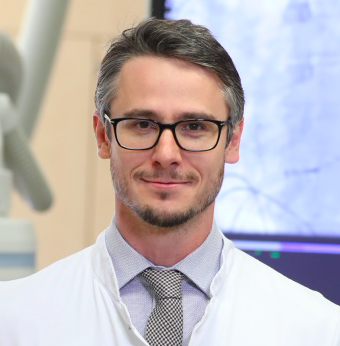 “For me, the major benefit of being involved with EHRA is the easy access to a large network of like-minded people,” says EHRA Young EP Committee Chair, Associate Professor Jedrzej Kosiuk (University of Leipzig, Germany).
“For me, the major benefit of being involved with EHRA is the easy access to a large network of like-minded people,” says EHRA Young EP Committee Chair, Associate Professor Jedrzej Kosiuk (University of Leipzig, Germany).
“The open network is valuable at any stage of your career, but is particularly useful for young members,” he continues. “The types of opportunities afforded by joining EHRA’s Young EP Community are very difficult to develop alone. For many years, I worked at an excellent centre, but still, as a young cardiologist, I found it extremely hard to get in touch with people from different centres to exchange ideas and initiate collaborations. But once I joined the young community, this quickly changed. I found that many of the resources that I needed to further my career were there in one place – I had access to an international network, education, training and collaborative opportunities.”
“As a member of the EHRA Young EP Community, I am able to connect with the main electrophysiology labs in Europe and have contact with experts all over the world.”
For clinic-oriented career building and training, the Young EP Committee has recently launched the 'EP Insight’ programme to provide opportunities to visit different centres and observe state-of-the-art techniques. EP Insight also allows young clinicians to observe how different groups, hospitals and healthcare systems work. Typically, applicants receive one to two weeks’ hands-off training with an expert electrophysiologist at their chosen centre. The programme may also act as an introduction and first experience for young EPs planning on a longer future visit.
Assoc. Prof. Kosiuk continues, “During the year, we also regularly make calls for science. Researchers share their ideas for scientific projects, we forward this call to all young community members and then they are able to build up groups of interest and collaborate on joint projects.”
Young community members are also taking a greater part in congresses as faculty members. “The growing expertise of willing young members is matched with the programme where possible and this brings down the average age considerably!” he says. Speed mentoring remains a very popular activity – young EPs meet face-to-face with senior colleagues to ask their advice on career enhancement. “We have had some success stories,” says Assoc. Prof. Kosiuk, “where mentees have joined the groups of their mentors and are now working together. This appears to be a very fruitful exercise on both sides, with senior colleagues reporting that they enjoy meeting young members. We are currently thinking about how we can expand our mentoring activities.”
Young community members can keep in touch via social media groups (e.g. on LinkedIn and Facebook). There is also the EHRA Young Ambassadors Summit, a dedicated meeting for Young EP National Ambassadors and people involved in young community activities. These summits have a varied programme from finding funding, to setting up studies, to how the young EP community can operate to even greater effect in the future.

 Our mission: To reduce the burden of cardiovascular disease.
Our mission: To reduce the burden of cardiovascular disease.